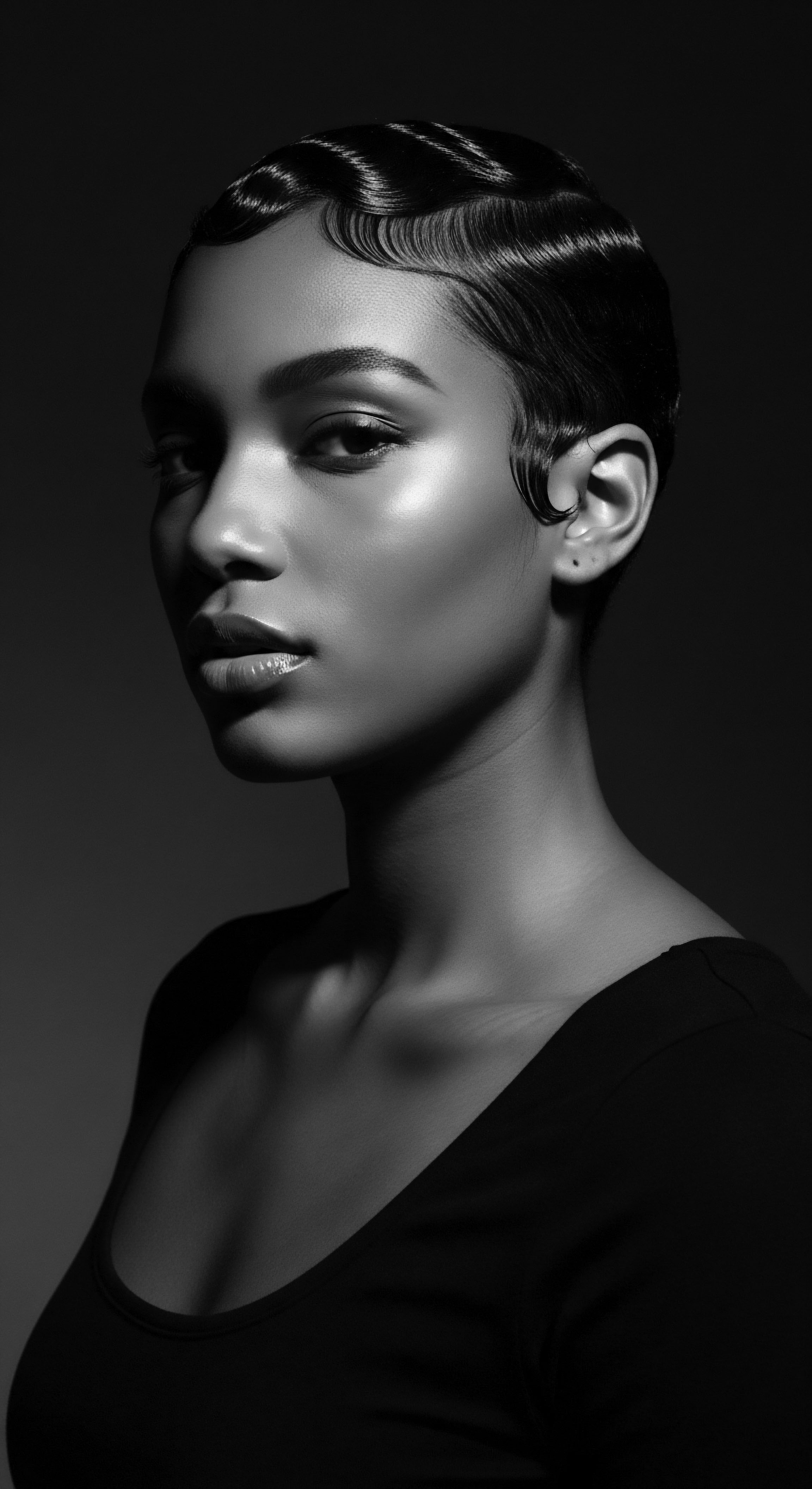
Roots
The sun, a fiery orb since time immemorial, has bathed our world in its fierce, life-giving light. For generations spanning countless centuries, those bearing the glorious coils and deep undulations of textured hair have walked beneath its gaze, not as passive subjects, but as architects of survival. Their crowns, a testament to genetic artistry, held secrets of endurance, whispered down through practices that were both practical and deeply spiritual. Our understanding of how these ancestral hair forms interacted with the solar sphere begins not in laboratories, but in the very land where life itself began, in the rhythmic pulse of communal living where wisdom was lived, not just spoken.
To truly grasp the foundational relationship between textured hair and its environment, we look to the very helix, the spiraling core of each strand. Unlike straight hair, which tends to lie flat and offer less coverage, the remarkable coiling patterns of textured hair naturally create a denser canopy. This inherent characteristic, a gift of genetic heritage, meant that simply having hair, particularly voluminous hair, provided a degree of physical shielding from direct sunlight.
The curls, twists, and kinks, when allowed to expand, form a labyrinthine structure, scattering incoming ultraviolet radiation rather than allowing it a direct path to the scalp. This bio-physical reality was intuitively understood by our forebears.
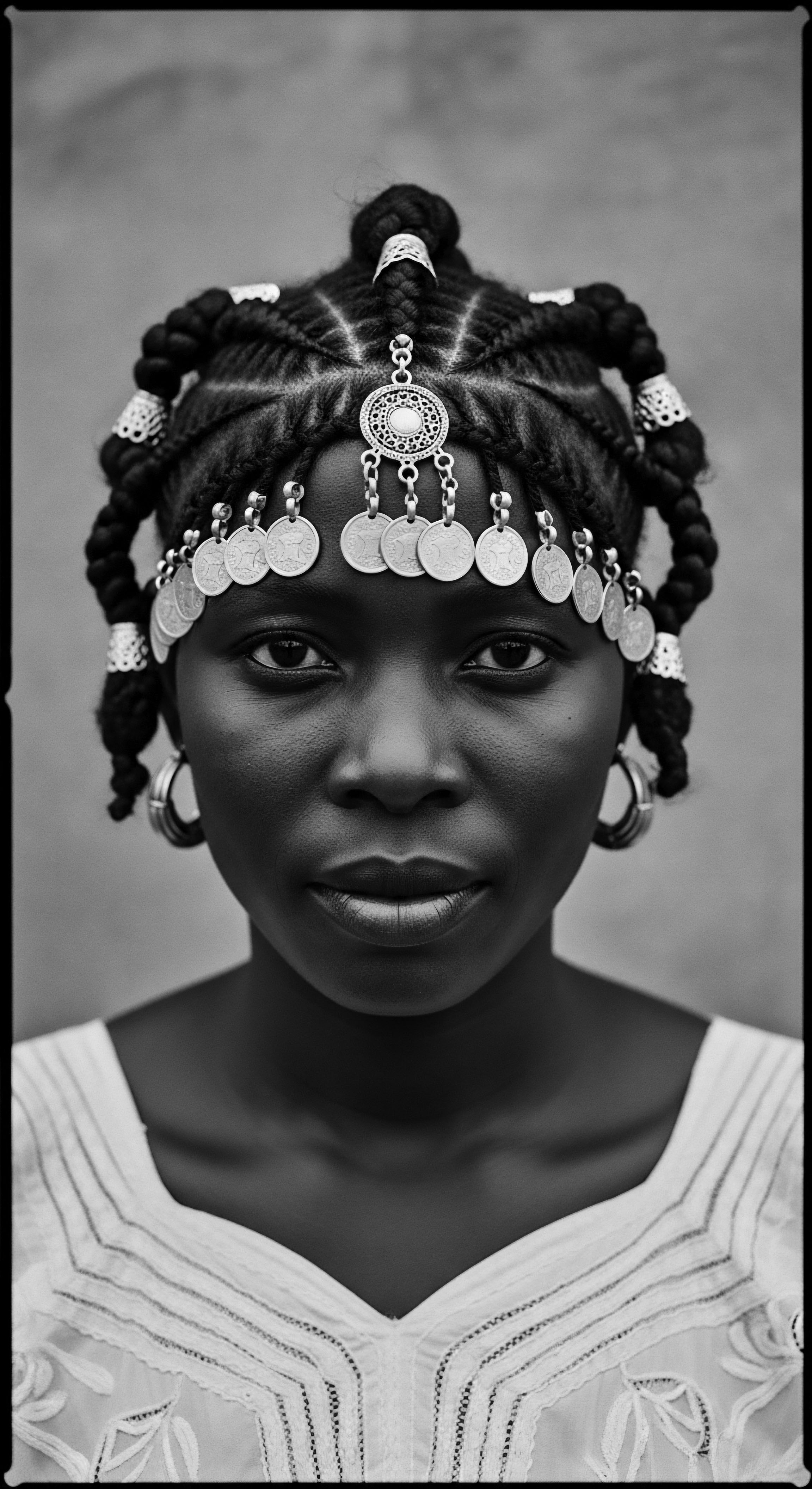
The Sacred Strand’s Architecture
Each strand of textured hair is not a singular, uniform column, but a complex, often elliptical or flattened, structure. This unique cross-section contributes to its ability to form tight, resilient coils. The cuticle, the outermost layer of the hair shaft, with its overlapping scales, also plays a part. In tightly coiled hair, these scales might not lie as flat as in straight hair, potentially allowing for different light reflection and absorption.
The interplay of these microscopic features contributes to the hair’s overall resilience and its capacity for natural protection. It is a biological marvel, a living testament to environmental adaptation over eons.
The intricate patterns of textured hair naturally form a dense, protective canopy against solar exposure.
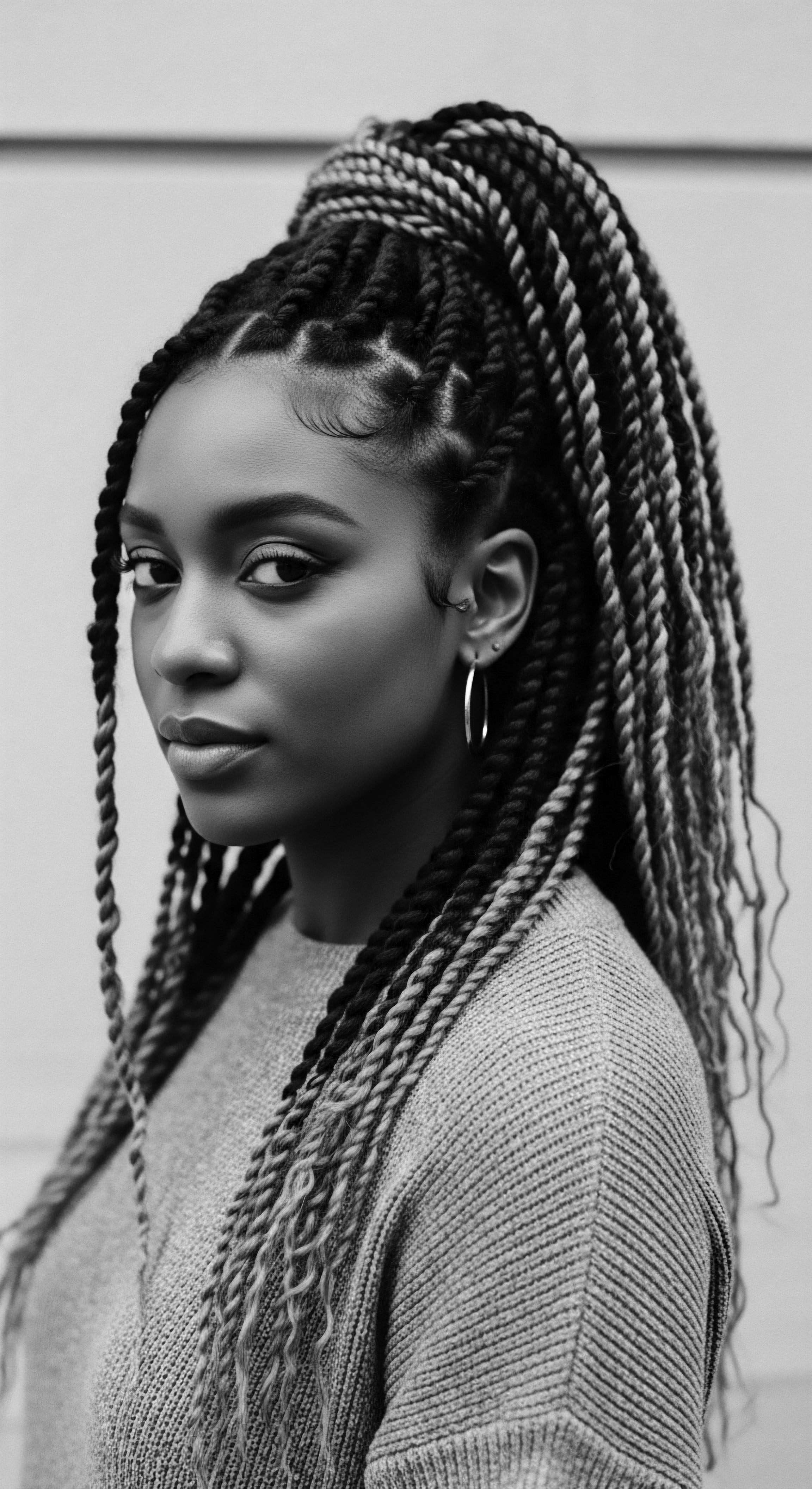
Naming the Crown’s Forms
Long before scientific classification systems, communities developed their own ways of describing hair, often tied to its appearance, its styling, or its connection to identity. These descriptors, often rooted in specific languages and dialects, acknowledged the varying densities and patterns of textured hair. For instance, in some West African traditions, specific terms might distinguish between different types of curls or coil patterns, implicitly recognizing how they behaved under different conditions, including the intensity of the sun.
These distinctions were not about categorizing for science, but for life, for aesthetics, for communication, and for practical application of care and styling. The lexicon of hair was, and remains, a living archive of community understanding.
- Kinky Hair ❉ Refers to tightly coiled strands, often with a zig-zag or S-pattern, providing significant density.
- Coily Hair ❉ Characterized by very tight, small spirals, offering considerable volume and thickness.
- Wavy Hair ❉ Displays a loose S-pattern, falling between straight and curly hair in its curl definition.
- Curly Hair ❉ Forms distinct, well-defined spirals, ranging from loose loops to tight corkscrews.
The environment, too, profoundly shaped hair practices. In sun-drenched regions, where the solar disc burned bright and long, the need for bodily protection, including the scalp, was paramount. Our ancestors in these climates developed sophisticated responses.
Their hair, rather than being an exposed vulnerability, became an adaptable shield. They understood the rhythm of the seasons, the intensity of the midday sun, and how these forces affected not just their skin, but their very hair, prompting ingenious solutions that spoke to a deep connection with nature’s cycles.
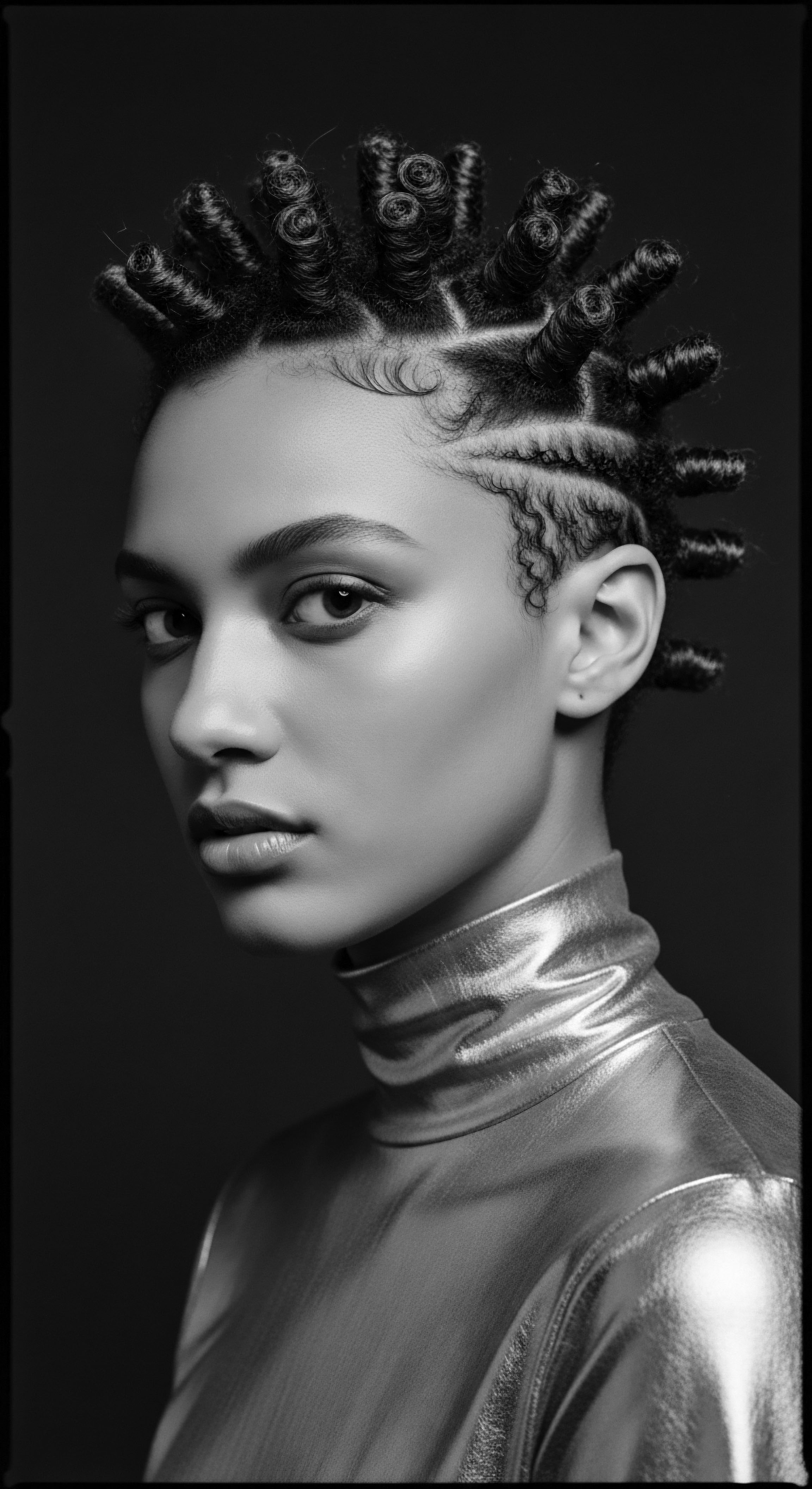
Ritual
The practical application of knowledge, born from countless observations under the glaring sun, became ritual. Traditional hairstyles were not merely adornments; they were deliberate acts of shelter, engineered with a precision that speaks volumes of ancestral ingenuity. These styles, often requiring hours of communal effort, served as dynamic barriers, protecting the scalp and hair strands from the harsh effects of prolonged solar radiation. The very act of forming these intricate constructions was a conversation between human hands and the natural world, a testament to a long-held wisdom.
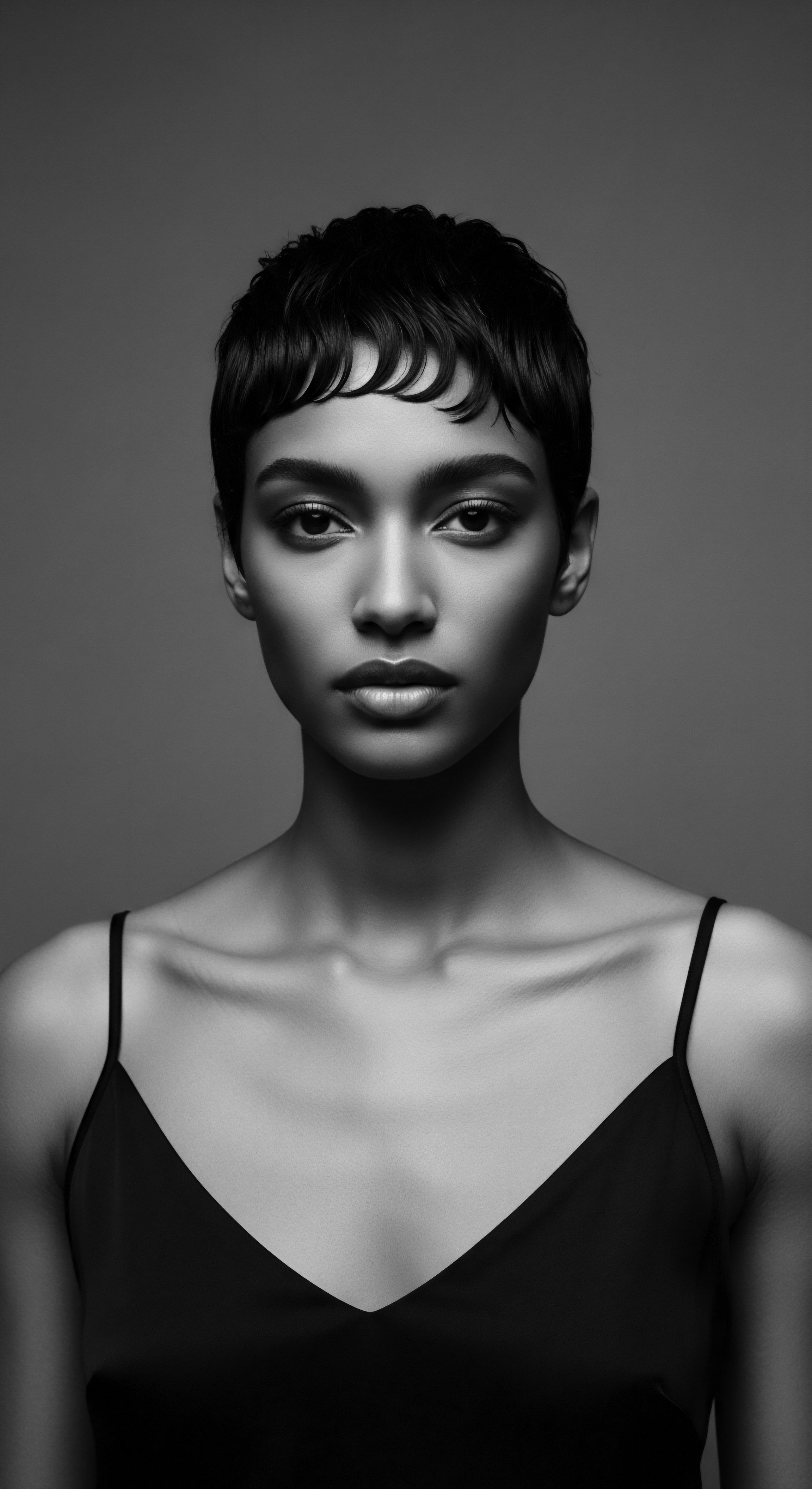
Were Elaborate Styles Intentional Sun Shields?
Consider the grandeur of certain ancestral hairstyles, such as towering braided formations, tightly coiffed locs, or meticulously wrapped head coverings. These styles often minimized exposed scalp area, thereby reducing the direct impact of ultraviolet rays. A study of hair practices among the Himba people of Namibia provides a compelling historical example. The Himba women’s distinctive ‘otjize’ mixture – a paste of butterfat, ochre, and aromatic resin – is applied to their hair, forming thick, reddish dreadlocks (Crabtree, 2011).
While its aesthetic and cultural significance is profound, its practical benefits extend to providing a physical coating that offers protection from the intense desert sun and harsh winds, acting as a natural sunscreen and sealant for the hair itself. This practice illustrates a multi-functional approach, where beauty, culture, and environmental adaptation are inseparable.
Traditional hairstyles functioned as adaptable shields, reducing direct solar impact on the scalp.
The layering inherent in many braided and twisted styles meant that individual hair strands, particularly the more vulnerable ends, were tucked away, shielded from environmental stressors. These styles were often kept for extended periods, making the protection a continuous, reliable aspect of daily life. The communal aspect of styling, often involving elders passing down techniques to younger generations, reinforces the idea that these practices were not random, but deeply embedded within the social fabric, serving practical needs alongside cultural expression.

Natural Alchemy Applied
Beyond the structural protection offered by the styles themselves, ancestral communities often incorporated natural substances directly into their hair care regimens, many of which had properties beneficial for sun protection. Oils extracted from local plants, clays from riverbeds, and pulverized barks or leaves were mixed and applied. These natural emollients would coat the hair shaft, potentially forming a thin film that reflected or absorbed some of the sun’s energy, reducing direct UV penetration. The knowledge of which plants held such properties was accumulated over generations, a living ethnobotanical database passed down orally and through practice.
For instance, shea butter, derived from the nuts of the shea tree, native to West Africa, has been a staple in hair care for centuries. Modern scientific analysis suggests that shea butter possesses a natural SPF of approximately 6-10, owing to its cinnamic acid esters (Akihisa, et al. 2010).
While not a full sunblock, consistent application as part of a daily ritual would undoubtedly contribute to mitigating the damaging effects of daily solar exposure on hair and scalp, preserving its health and vibrancy. These were not mere cosmetic choices, but calculated acts of self-preservation, deeply rooted in the land.
| Traditional Practice Elaborate Braiding and Twisting |
| Potential Protective Mechanism Increased hair density, reduced scalp exposure, physical barrier against UV. |
| Traditional Practice Application of Plant Oils (e.g. Shea, Coconut) |
| Potential Protective Mechanism Natural SPF properties, moisture retention, physical barrier. |
| Traditional Practice Use of Mineral Clays/Ochre |
| Potential Protective Mechanism Physical coating, pigment for UV absorption, scalp soothing. |
| Traditional Practice Headwraps and Fabric Coverings |
| Potential Protective Mechanism Complete scalp and hair shielding, cultural and practical utility. |
| Traditional Practice These heritage practices demonstrate ingenious methods for safeguarding hair and scalp from environmental stressors. |

Tools of the Ancestral Stylist
The creation of these protective styles required specific tools, often crafted from natural materials themselves. Combs carved from wood or bone, intricately designed for detangling and sectioning coiled hair, were central. These tools were not simply utilitarian; they were extensions of the hands, embodying the precise techniques passed from one generation to the next.
The tools allowed for the neat partitioning of hair, essential for creating styles that offered consistent coverage. The very act of styling became a meditative practice, connecting individuals to a long chain of ancestral wisdom, ensuring not only beautiful hair but also hair that withstood the sun’s persistent presence.

Relay
The legacy of ancestral hair practices, once whispered through generations and etched into communal memory, finds its echoes in contemporary understanding. Our current scientific insights often affirm the intuitive wisdom of those who came before us, bridging the chasm between ancient practices and modern research. The complex interplay of hair structure, natural ingredients, and styling techniques, once understood through observation and oral tradition, can now be analyzed with precision, revealing the ingenious strategies employed by our forebears to contend with solar exposure.

How Does Textured Hair’s Structure Aid Sun Protection?
The inherent geometry of textured hair, with its characteristic curls, coils, and kinks, creates a natural density that acts as a physical filter against ultraviolet radiation. Researchers studying the optical properties of hair note that the tighter the curl pattern, the more light is scattered and absorbed within the hair mass itself, preventing it from directly reaching the scalp. This phenomenon is a passive form of solar defense, built into the very genetic blueprint of textured hair. Imagine a dense forest canopy; while some light may filter through, the majority is intercepted by the layers of leaves.
Similarly, a head of tightly coiled hair offers a complex, multi-layered shield. This natural attribute meant that traditional styles that maximized volume or density, such as large afros or voluminous braided styles, inherently boosted this protective effect.
The tighter curl patterns of textured hair increase light scattering, offering a natural barrier to UV radiation.
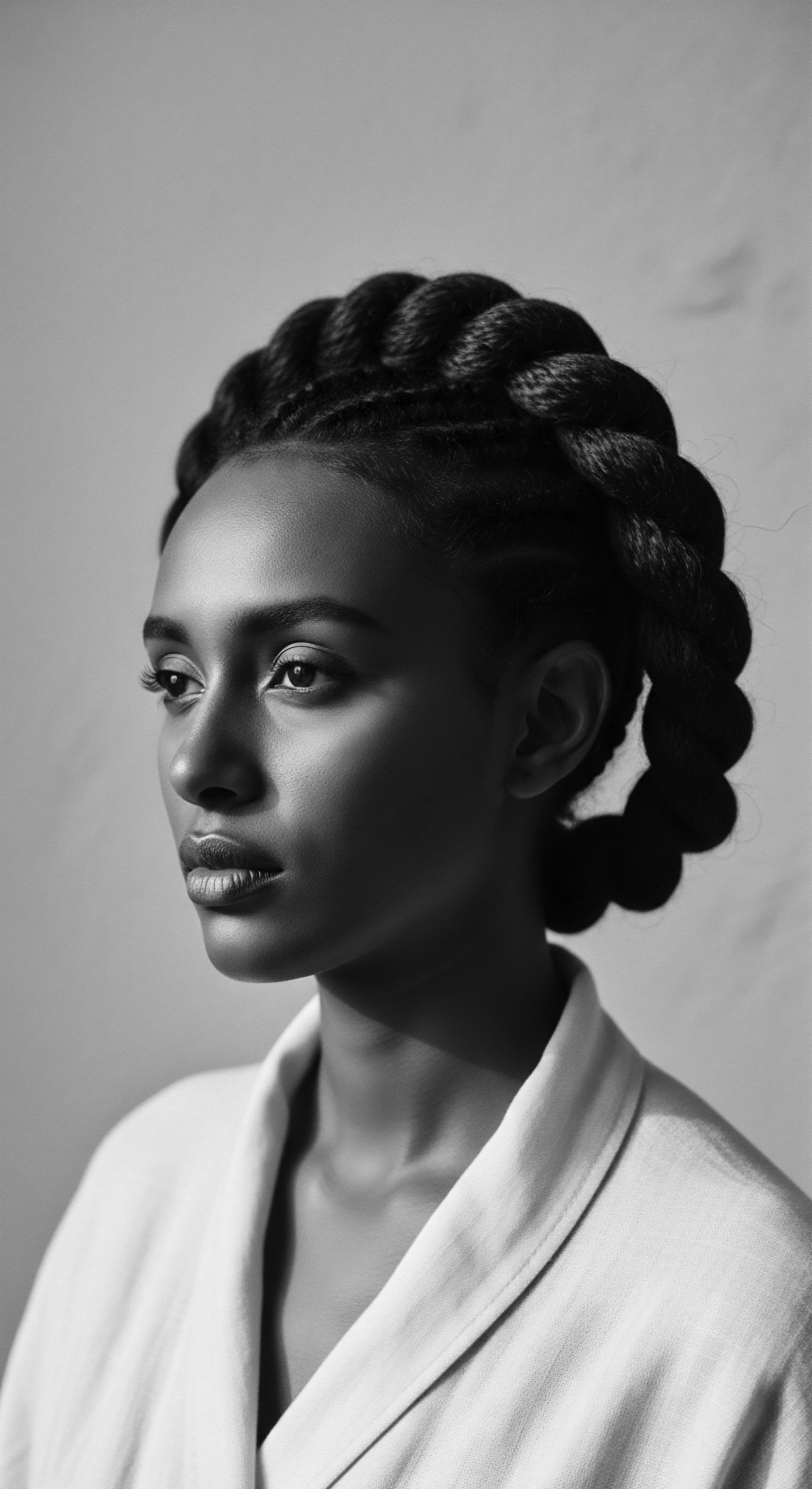
Can Traditional Hair Coatings Offer Modern Scientific Benefits?
Many ancestral communities used natural substances as hair coatings, such as plant oils, butters, and mineral pigments. The Himba practice of applying ‘otjize’ not only carries deep cultural meaning but provides tangible benefits for hair health and protection. Research by G.S. Nyamapfeni and B.
Masukume (2013) on traditional cosmetic practices in Zimbabwe, for example, highlights the use of natural oils derived from indigenous plants, noting their emollient and protective properties, some of which possess minor UV-filtering capabilities. While specific SPF values for these traditional applications in daily life are complex to quantify, the consistent layering of these substances would certainly contribute to a cumulative effect, providing a barrier that reduces the photo-oxidative stress on hair proteins and lipids, thereby minimizing sun-induced damage. The lipids and pigments in these natural mixtures serve as a mild sunblock, reflecting or absorbing harmful rays before they penetrate the hair shaft or scalp.
This traditional knowledge, now supported by contemporary understanding of photoprotection, emphasizes that ancestral practices were not accidental but finely tuned responses to environmental challenges. The repeated application of these natural conditioners also kept the hair moisturized, reducing brittleness and breakage that can be exacerbated by sun exposure, thereby maintaining the hair’s overall health and strength.
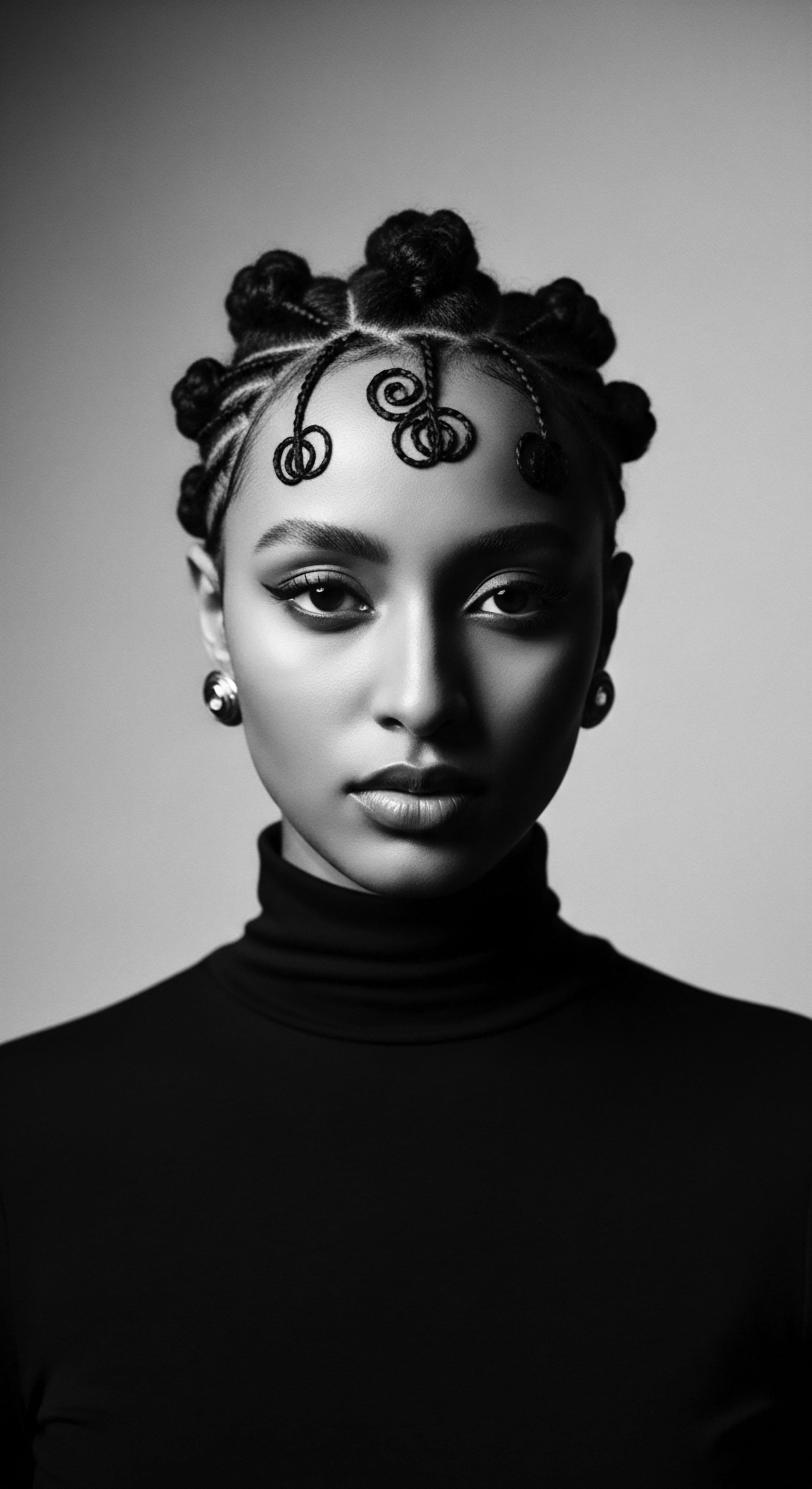
How Did Cultural Practices Reinforce Sun Safety?
The regular maintenance of protective styles, a common practice in many African and diasporic communities, also indirectly contributed to sun protection. Re-braiding, twisting, or re-loc’ing hair meant that fresh layers of hair were consistently being formed into a protective configuration. This continuous care cycle ensured that the hair remained dense and covered.
Moreover, the cultural significance of head coverings, from elaborate scarfs to intricate wraps, particularly for women, further augmented this protection. These coverings, often vibrant and artistically arranged, were not solely for modesty or aesthetic appeal; they provided an additional, often complete, physical barrier against the sun’s relentless rays, shielding the entire head.
- The Art of Sectioning ❉ Precise hair sectioning prior to braiding or twisting ensures uniform tension and consistent coverage, creating a cohesive protective barrier.
- Scalp Health Through Application ❉ Regular application of oils and butters to the scalp during styling helps to maintain skin health, which is crucial for overall hair resilience against environmental factors.
- Durability of Styles ❉ Many traditional protective styles were designed to last for weeks, offering continuous, consistent protection from elements, reducing daily exposure risk.
The wisdom embedded in these practices, transmitted across generations, offers a profound framework for understanding how ancestral communities leveraged both the inherent characteristics of textured hair and environmental resources to sustain health and vitality under the sun. It challenges us to look beyond simplistic interpretations and appreciate the deep scientific and cultural intelligence woven into every strand of heritage.

Reflection
The journey through the heritage of textured hair and its ancient dialogue with the sun is a testament to adaptive brilliance. We have traversed the intricate landscape of the hair strand itself, a biological wonder designed for resilience, and observed how human ingenuity, coupled with deep environmental understanding, transformed it into a living shield. From the dense, natural helix that scatters sunlight to the meticulous artistry of braided fortresses and the anointing touch of earth’s own oils, our ancestors built a profound legacy of sun protection. This is not merely a historical account; it is a resonant chord, vibrating through generations, informing our present, and shaping our future.
The Soul of a Strand, truly, lies in this enduring wisdom. It speaks of hair as a profound archive, holding the stories of survival, beauty, and communal care. When we consider the question of sun protection for textured hair, we are called to look beyond synthetic solutions and recognize the ancestral knowledge embedded in every coil, every twist, every tradition.
Our textured crowns, then, are not just aesthetic statements; they are declarations of a heritage rooted in protective wisdom, a continuing conversation between our past and the sun-drenched paths we walk today. The legacy is alive, vibrant, and waiting for us to listen, to learn, and to honor its enduring narrative.
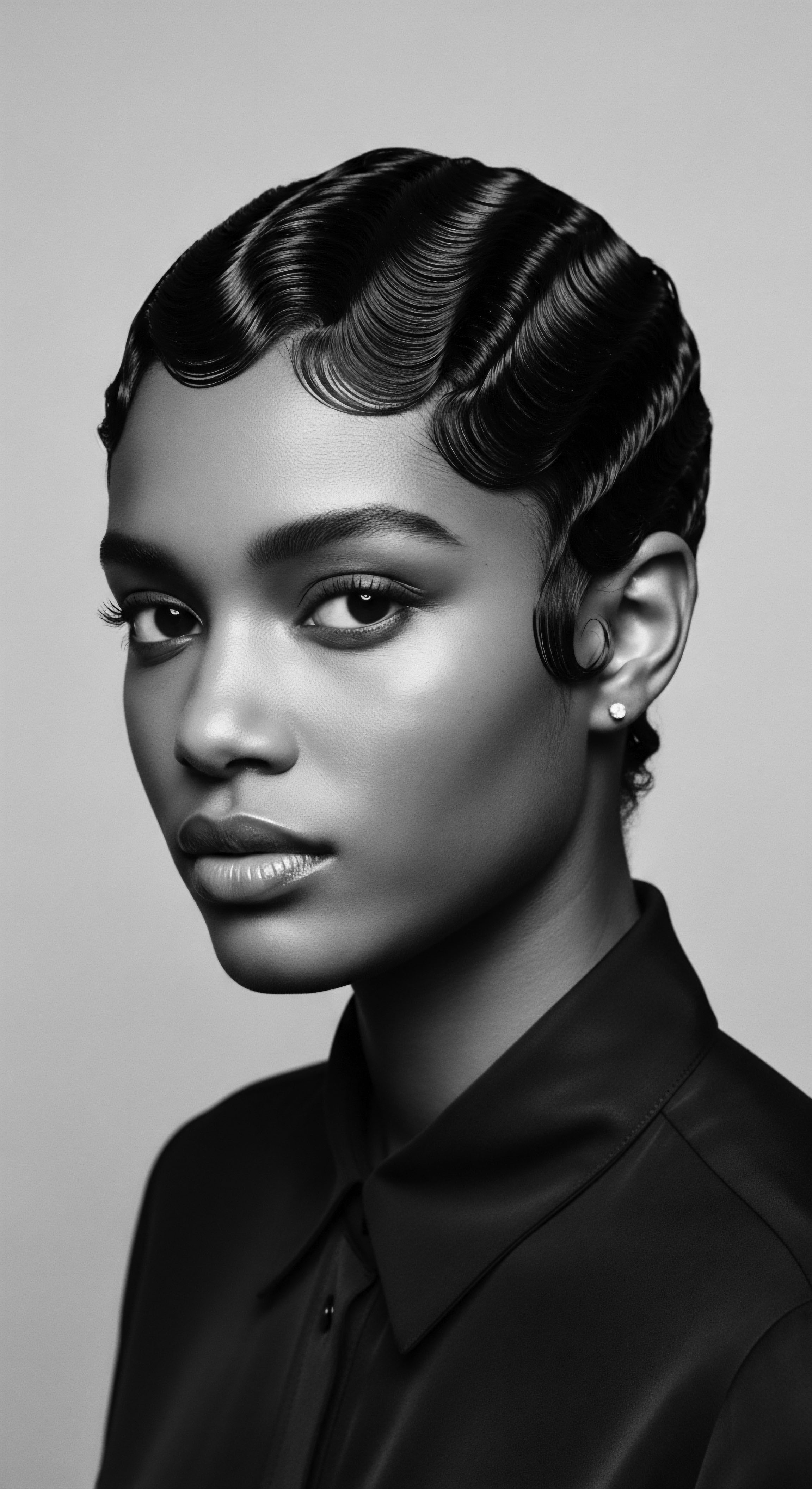
References
- Akihisa, T. Kojima, N. Kikuchi, T. Yasukawa, K. Tokuda, H. & Matsumoto, T. (2010). Anti-inflammatory and Chemopreventive Effects of Triterpene Cinnamates and Acetates from Shea Butter. Journal of Oleo Science, 59(12), 657-662.
- Crabtree, M. (2011). The Himba of Namibia ❉ Their Hair, Their Heritage. Textile Society of America Symposium Proceedings, Paper 641.
- Nyamapfeni, G. S. & Masukume, B. (2013). Traditional Cosmetic Practices and Their Application in Modern Product Development ❉ A Case of Indigenous Knowledge in Zimbabwe. Journal of Applied Science & Environmental Management, 17(4), 579-586.
